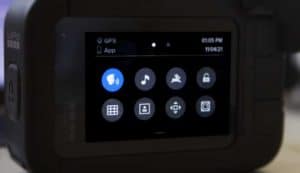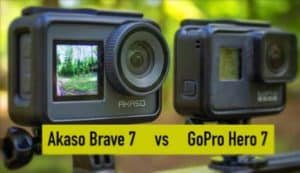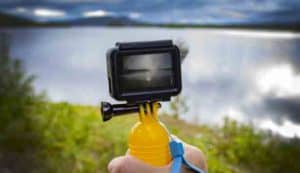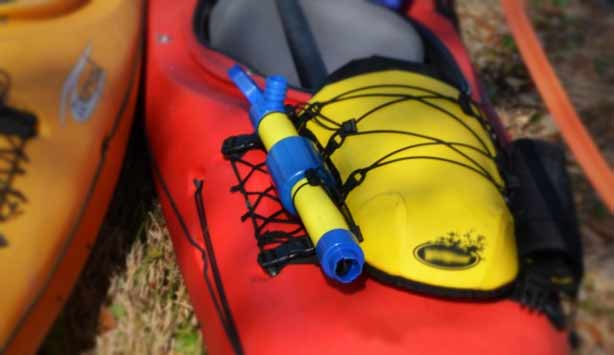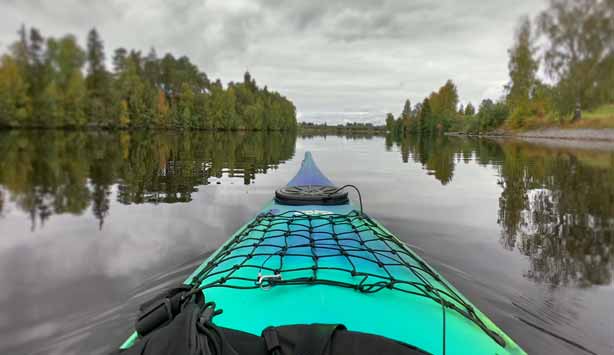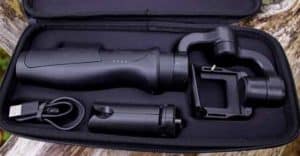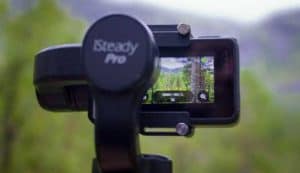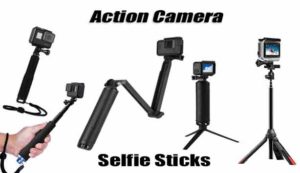This page may have Commerce Content. If you buy something from our posts, we may get a small share of the sale. Click here for more.
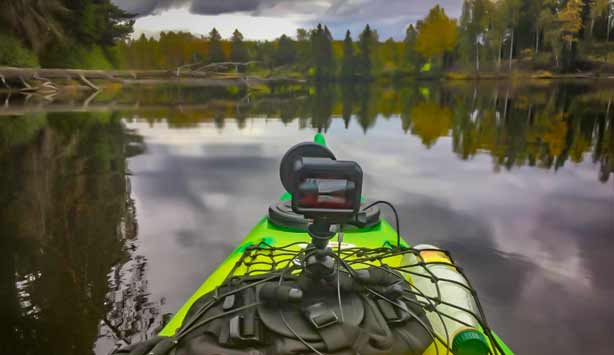

Editor & Article Writer for Outdoor Wilds
As an Amazon Associate I earn from qualifying purchases. Thank you for helping to support the site.
Tips for Kayaking with Action Cameras
Taking pictures and especially recording video from a kayak is not an easy thing to do. If it is not done with some thought prior to setting out, it can take away from your enjoyment of time spent in your kayak.
However, if you do manage to capture quality video footage it can make for a very rewarding experience.
Sharing your edited video on social media or just as a record to look back on in the future does bring a real sense of accomplishment afterwards.
Below are some practical tips for anyone looking to film their kayaking with an action camera.
What Style Of Video To Shoot
Before you do anything, you need to plan what you would like to shoot. For instance, you may want to capture the water and the surrounding scenic views or just a gentle paddle to a specific landing platform or mooring.
Note that one the biggest mistakes you can make is to try and film too much. Using several cameras or more does help to structure the video shots here, which I’ll explain in more detail further in this article.
However, if you mount more than one camera on your Kayak or helmet, it may become a distraction and affect your paddling.
Additionally, if you get too consumed with capturing footage, you may not enjoy your time spent on the water. So there is a balance as to what exactly you want to achieve.
Is it a day more focussed on actually kayaking where recording just a basic video from a single viewpoint is the aim. Or a fast moving action video with a variety of camera angles, fields of view and locations.
Mounting The Camera
After deciding your location to film and the style of video you wish to shoot, the next consideration is where to mount the camera.
There are 2 main types of action camera mounting onto a kayak.
- On-body mount
- On-Kayak mount
Both of these mount systems have advantages and disadvantages in terms of the type of video footage they’re able to achieve. Let’s now take a look at each in turn starting with the on-body mounts.
On-Body Mounts
There are 4 places to attach an action camera to your person while kayaking. I would always just mount the camera on dry land after you have fitted out with your safety gear first.
Chest mount
The chest mount provides the viewers a view of both the paddle, plus a shot of the way ahead at the same time. It’s a really immersive viewpoint that makes the viewer feel their paddling along with you.
It has Less motion and vibration that you get from a head mount. For this reason I’d suggest the chest mount or perhaps the shoulder mount as the master shot for most kayaking sports.
My suggested option for the chest strap is the official mount from GoPro. I’ve found this strap mount to be comfortable when wearing a thick outer jacket while skiing and kayaking.
It’s fully adjustable, has a fair amount of padding on the chest plate and is easy to slip into prior to setting off in your kayak. For ocean kayaking I’d suggest the chest mount every time.
Head strap / helmet mount
Along with the chest mount the head strap is one of the most popular places to set your camera. I also include the option of a self adhesive GoPro mount here for placing onto a kayak helmet.
It offers a similar shot to the chest mount with less paddling and tends to have more motion. This makes it a better option for river kayaking, catching the bow breaking the waves.
If you are wearing a helmet for the more extreme paddling sports then a self adhesive mount is the way to go here.
Place a curved mount at the top but slightly more to the front of the kayak helmet for the best point of view shot.
Mouth mount
In regards to the mouth mount there is a safety issue here first and foremost. Especially when white water kayaking. It is frowned upon by some to use such a mount in white water.
On the plus side, the mouth mount probably has the best point of view(POV) out of all the on-body mounting systems. They’re two very different types of shots despite giving you the same angle.
Compared to the chest mount this shot has a lot more movement, it’s a lot more dynamic every time you move your head.
For running rivers or white water kayaking I’d always recommend the head strap or mouth mount as it picks up the higher paced action far better than the chest strap.
My go-to mouth mount of choice is the Pro Standard Grill Mount.
Shoulder mount
A similar POV shot to both the chest and mouth mount. The shoulder mount does have the benefit of being able to rotate the camera 360 degrees.
This is especially useful to capture a shot of the river bank to the side or even from where you have travelled from.
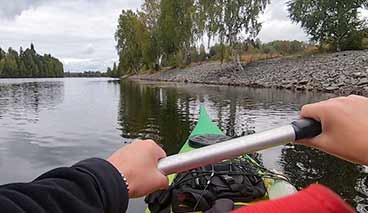
I would suggest not to overuse these types of shots, grabbing at least a couple of each will give you options when editing the footage together into an action video sequence.
On-Kayak Mounts
This is where it starts to get really interesting and that is the option of adding a second camera to the mix by fixing a camera onto the kayak itself.
You can for example have a camera mounted on the bow of the kayak, plus a POV shot provided by a camera in a chest mount.
Generally there are 4 main types of on-kayak mounting systems without the need to really go into the many DIY mounts that kayakers have developed over the years.
So for this article which is aimed at people fairly new to the sport I’m only going to focus on the “out the box” style methods.
Suction cup mount
Probably the one type of mount most of you are familiar with having owned a suction cup mount for your smartphone to attach to the windshield of your vehicle.
This mount allows you to very quickly and super easily to reposition the camera to get a load of different angles.
Put the camera on the bow cutting through the waves or a selfie shot taken from the bow looking back at where you’ve paddled from.
You can really play with the angles here and record many different types of POV shots.
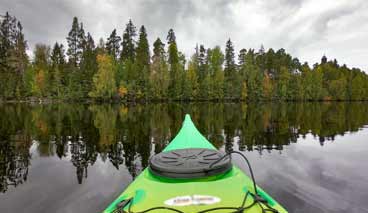
 GoPro Suction Cup Mount (GoPro Official Mount),...
$39.39
GoPro Suction Cup Mount (GoPro Official Mount),...
$39.39
Last update on 2024-04-02 / Affiliate links / Images from Amazon Product Advertising API
Test the suction cup mount first
Make sure the suction cup works on the kayak beforehand. With ocean kayaks it’s less of a problem as they have a gel coated fibreglass finish which the suction cup works very well on.
The plastic moulded kayaks used mostly for river kayaking have a textured finish that doesn’t work as well at holding the suction provided by the cup. Suction tends to leak out and the mount will fail after a few minutes on a lot of these types of kayaks.
Make sure you tether the suction mount to the kayak regardless. They will not float so for the price of buying a relatively low cost tether it’s not worth risking losing a GoPro.
Strapping to the bungee cord
This is one of 2 options for strapping the camera to the kayak if a suction cup is not an option due to the reasons I mentioned earlier.
Taking a head strap mount and passing the nylon through the eyes that hold the bungees to the hull of the kayak. It’s a more secure way to hold the camera and will work far better on the moulded plastic kayaks.
It does take longer to set up though but you can flip the camera round to get a shot of where you’re going or that selfie shot with the scenery in the background.
Octopus style tripod
An alternative to using the head strap mount attached to the bungee cord.
The octopus style tripod with articulating legs around the bungee cord is a quick and easy way to get that shot from the bow or a selfie shot.
Ensure the horizon is level when the kayak is balanced in its natural floating position when near the shore. I suggest you attach while on shore and use a tether for added safety. There’s a number of options to go with here, the Joby Gorillapod is a favorite of mine.
Last update on 2024-04-02 / Affiliate links / Images from Amazon Product Advertising API
Paddle mount
Lastly is the paddle mount. Although not technically an on-kayak mount I’ve included it in this section as it does offer many additional camera angles.
This system captures a lot of motion in the shot which can make the viewer sea sick so be mindful of that.
Where It does come into its own is it can act as a long selfie stick when holding the paddle as you glide through the water.
It gives you the option of capturing some different perspective shots of where you’re heading to. It’s great for capturing group shots when kayaking with friends too.
Adding GPS Data To GoPro Video Footage
For those of you who use a GoPro with the ability to capture GPS data on recorded video files. Adding GPS overlays to your kayaking footage can add a different dimension to your edit.
Using the GoPro app you can add data such as speed, path travelled and even G-force readings.
For more information have a read on how to overlay GPS data onto your GoPro video footage.
Useful links:

